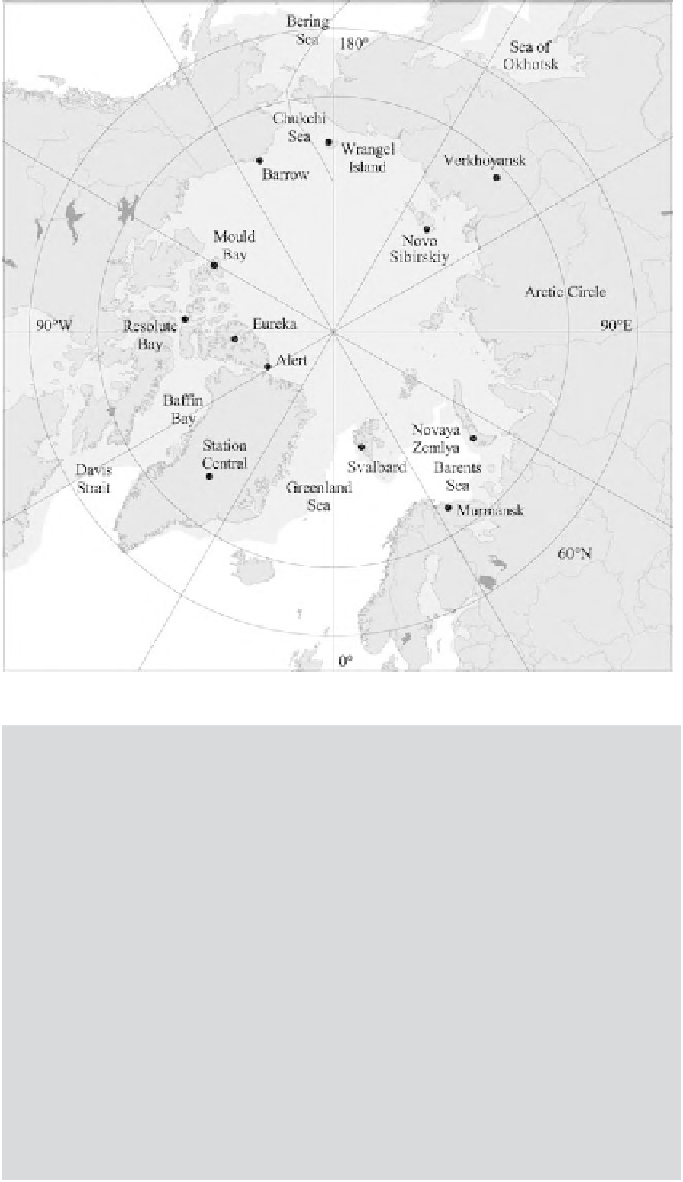Geoscience Reference
In-Depth Information
Figure 5.9 Area map,
Arctic. The light grey area is
the maximum sea ice extent
in early spring.
climatological definition, that is the position of the 10 8C isotherm of the
warmest month (K¨ppen
1936
). The position of this isotherm closely follows
the line that differentiates the treeless tundra from the taiga. The Arctic Ocean
is fairly centrally located around the North Pole (Figure
5.9
). The largest land
mass within the Arctic Circle is found in Siberia, followed by Canada.
Greenland lies within the Arctic Circle, with the exception of its southern
tip. Here we find the only large ice sheet in the Northern Hemisphere, with an
elevation of about 3000m; this ice sheet contains 9% of all fresh water on
Earth. Further, parts of Finland, Sweden, Norway, and Alaska lie north of the
Arctic Circle. These areas have been inhabited for millennia, originally by
Inuits in Greenland, Canada, and Alaska, Chukchis in Eastern Siberia, and
Scandinavians and Russians in their respective countries. As agriculture is
limited at these high latitudes, the people have lived from hunting and fishing
and the population density is very low.
The first systematic meteorological observations of the Arctic Ocean were
obtained in the nineteenth century, when great interest was given to the

Search WWH ::

Custom Search